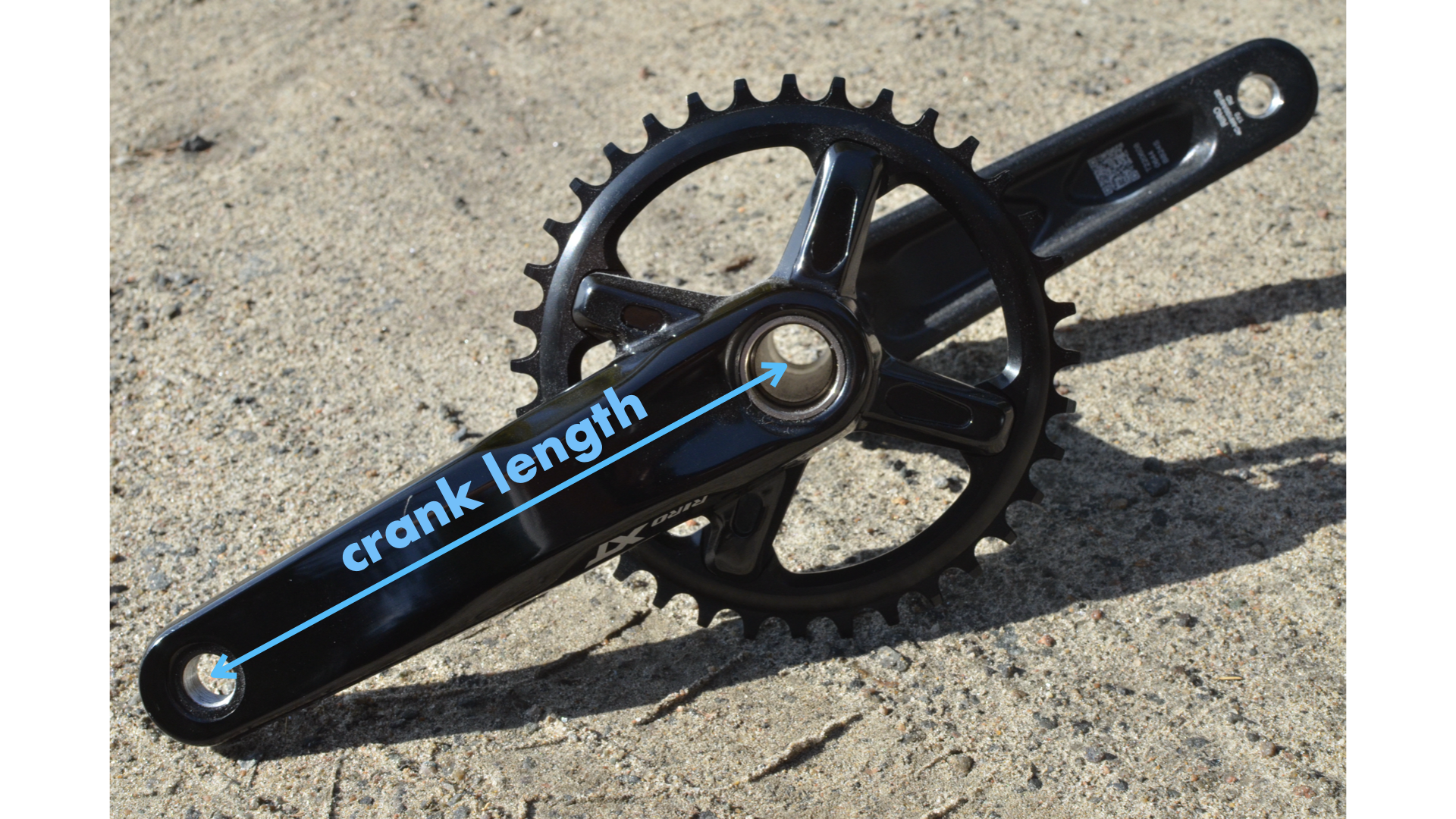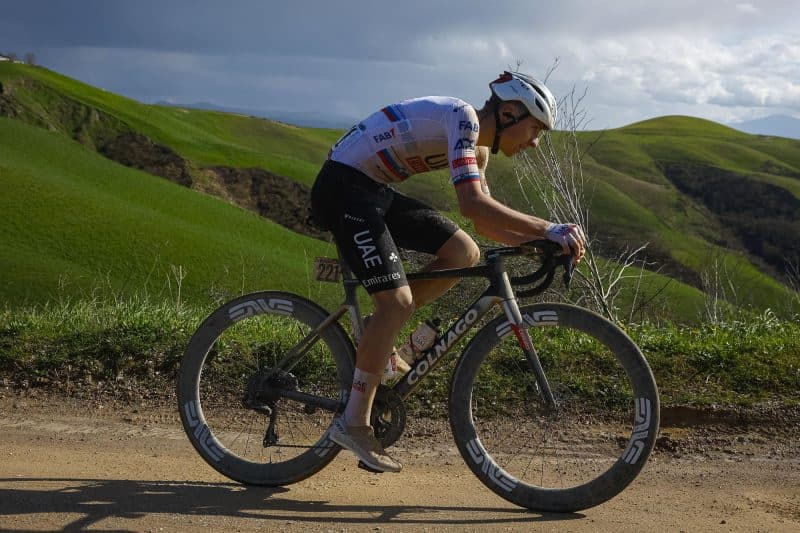Choosing the right crank arm length is crucial for optimizing your cycling experience. The correct length can improve your efficiency, comfort, and overall performance, whether you're a casual rider or a competitive athlete. Here’s a guide to help you determine the best crank arm length for your needs.
What is crank length?
Crank arms connect the pedals to the bike’s bottom bracket. They come in various lengths, typically ranging from 165 mm to 175 mm for road bikes, and slightly longer for mountain bikes. However, most road bikes nowadays are sold with either 170mm or 172.5mm

Toque, Power and Crank Arm Length
The relationship between torque, power, and crank arm length is fundamental to understanding cycling efficiency and performance. Here’s a breakdown of how these elements interact:
Torque is a measure of the rotational force applied around an axis—in cycling, this refers to the force applied to the pedals to turn the crank. It is calculated using the formula:

- Force: This is the amount of pressure you apply to the pedals.
A longer crank arm increases the lever arm distance, allowing the same amount of force to produce greater torque. This means:
- Longer Crank Arm: More torque for the same force exerted on the pedals, which can be advantageous for climbing or powering through resistance.
- Shorter Crank Arm: Less torque for the same force, but can facilitate a higher cadence (pedal speed), which may be beneficial in maintaining speed on flat terrain.
Power is the rate at which work is done and is influenced by both torque and cadence. The relationship is defined by the equation:
In short, to increase power output, one can either increase the torque, which is a combination of the crank length and the amount of force applied to them, or increase the cadence.
Interplay Between the Three Factors
Increased Torque: With longer crank arms, you can generate more torque with the same amount of force. This is beneficial for producing high power outputs at lower cadences such as during climbs or dragging sprints.
Cadence and Crank Length: Shorter crank arms can allow for a higher cadence, which may lead to a more consistent power output over flat or rolling terrain. Higher RPMs can sometimes compensate for lower torque, maintaining power levels.
Efficiency: Finding the right balance between crank arm length, torque, and power is crucial for maximizing efficiency. Too long a crank may lead to overextending the legs, causing discomfort or inefficiency, while too short may not provide adequate torque for effective climbing.
In summary, longer crank arms can provide greater torque, which is useful in high-resistance situations, while shorter crank arms may facilitate a higher cadence, enhancing speed and efficiency on flatter terrain.
Body Position
The length of your cranks is one of the fundamental pillars of any your riding position. Take a look at the different results obtained in the Virtual Fit Room by swapping 165mm cranks with 175mm ones on a 2024 Specialized tarmac sl8.

1. Knee extension
Longer Crank Arms: When using longer crank arms, the pedals travel through a greater arc, which can lead to more pronounced knee extension at the bottom of the pedal stroke. This can result in a steeper knee angle during the pedal stroke, potentially increasing the demand on the knee joint.
Shorter Crank Arms: Shorter crank arms reduce the range of motion of the pedals, resulting in less knee extension. This can lead to a more acute knee angle, which may be more comfortable for some riders, especially those with limited flexibility.
2. Hip Flexion and Extension
Longer Crank Arms: When using longer crank arms, the pedals move through a larger circular path. This increases the range of motion at the hip joint, resulting in greater hip flexion at the top of the pedal stroke. This can enhance power output but may require more flexibility and can lead to discomfort if the hip angle becomes too acute.
Shorter Crank Arms: With shorter crank arms, the range of motion is reduced, resulting in less hip flexion. This may create a more relaxed riding position, potentially reducing strain on the hip joint, but might also limit the power generated, especially in climbs.
Of course, both hip and knee extension can be accounted for by decreasing/increasing seat height, however, this modification will require the entire cockpit position to be re-examined.
Crank lengths and rider height
Typically, the modo adopted by the industry is this:
“Tall riders need big cranks, Short riders need small ones”.
Have a look at what some of the world's best cyclists prefer riding:
- Tom Piddock 1.70m -> 160mm
- Tadej Pogacar 1.76m -> 165mm
- Remco Evenoepoel 1.71m -> 165mm
- Fillipp Ganna 1.93m -> 170mm
- Mark Cavendish 1.75m -> 170mm
- Jonas Vingegaard 1.75 -> 172.5mm
- Mathieu Van der Poel 1.84 -> 172.5mm
- Wout Van Aert 1.9m -> 172.5mm
- Kasper Asgreen 1.92m -> 175mm
- Neils Pollitt 1.92m-> 175mm
While there are always exeptions, most of the time, the taller you are, the longer cranks your cranks should be. Very rarely should anyone go from one extreme to the opposite.
That beeing said, crank length is not something that should be based solely on your height.
Why choose longer cranks?
- Longer cranks offer better torque, which can improve power on steep climbs .
- Increased range of motion can help increase comfort and offer a more relaxed riding position.
- You are a rider who prefers to ride with a lower cadence
Why choose shorter cranks?
- Shorter crank arms can allow for a higher cadence, which can be beneficial for road cyclists focused on speed
- Shorter cranks open up the hip angle which can remove stress on lower back or allow your upper body to be in a even more aggressive position
Testing for ideal Arm length
If you’re unsure about the ideal length, consider the following approaches:
- Trial and Error: If possible, test different crank lengths on a stationary bike or a friend's bike. Pay attention to how your knees react to their new movement pattern. Additionally, give different cadences a try and observe which cadence/ arm length combination produces the most efficient output. That should be easily measureable with heart rate and power output.
- Professional Fitting: Investing in a professional bike fitting can provide personalized recommendations based on your body measurements and riding style.
- Virtual Fit Room: The VFR is a great way to apply different crank lengths to your morphology and observe how it impacts your current fit. It can also help pinpoint what compensatory measures can be taken to re-examine your bikefit on different cranks.
Conclusion
Choosing the correct crank arm length is essential for maximizing your cycling performance and comfort. By considering your own morphology, riding style, flexibility, and preferences, you can find the ideal crank length that suits your needs. If you’re still uncertain, don’t hesitate to seek the expertise of a professional fitter. With the right crank arm length, you’ll be well on your way to a more enjoyable ride. Happy cycling!
